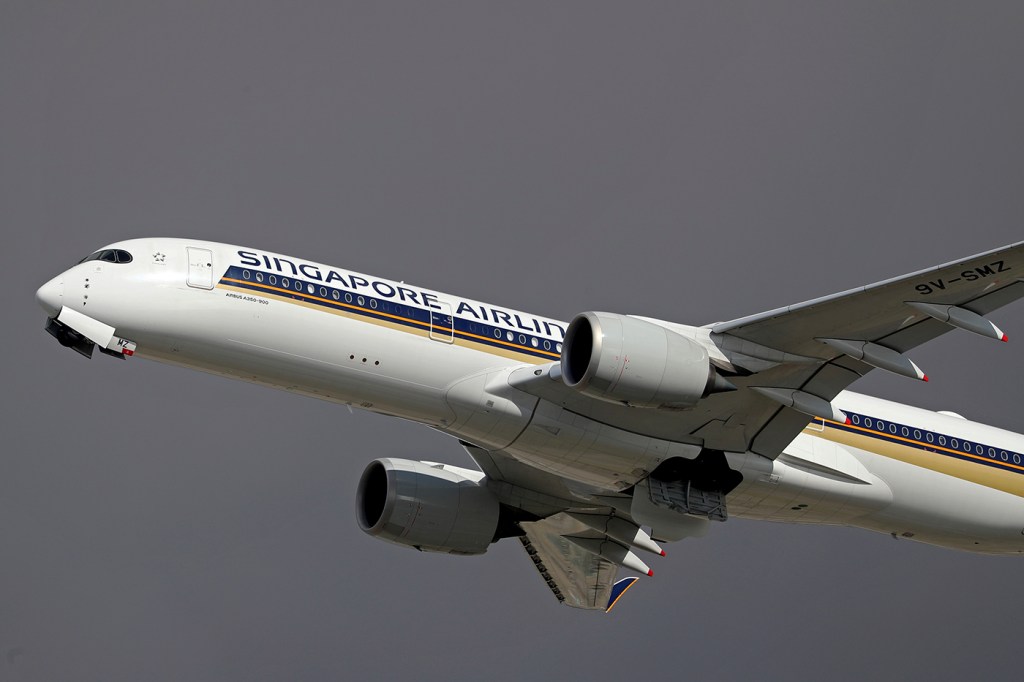Can airplane turbulence really kill you? Aircraft propulsion expert weighs in on Singapore Airlines death
One person was killed and several dozen more injured when a flight from London to Singapore encountered “sudden, extreme turbulence.”

One person was killed and several dozen more injured Tuesday when a flight from London to Singapore encountered “sudden extreme turbulence” and plummeted roughly 6,000 feet in a matter of minutes, according to The Washington Post.
All told, there were 211 passengers and 18 crew on board, according to Singapore Airlines. The deceased passenger reportedly suffered a heart attack during the mid-air tumult — though that detail has yet to be confirmed.
The Boeing 777-300ER operated by Singapore Airlines diverted to Bangkok, where it landed at 3:45 p.m. local time on Tuesday following the in-flight incident. The New York Times reports that 71 passengers were injured.
Bruce Mamont, a flight instructor and former Boeing employee who now teaches courses on flight and aircraft propulsion at Northeastern University’s Seattle campus, says that Singapore Airlines Flight 321’s sudden plunge from roughly 37,000 feet is a highly abnormal movement for an aircraft of that size.
“If you’re going to make a dive at that rate of descent, you’d have to disengage the autopilot and push the control column pretty abruptly and deliberately,” Mamont says. “I mean quite literally shoving the control column forward more than would be the case if it were accidentally bumped, which was one of the speculations offered.”
NBC News reported that the 6,000-foot change in altitude was the result of a “controlled, emergency descent.”
First-hand accounts of the minuteslong episode painted a chaotic scene: objects flew through the air, while passengers were thrown from their seats — some crashing into the overhead cabin with such force as to leave dents in it.
Can airplane turbulence really cause fatalities in the sky?
So-called clear air turbulence occurs primarily at high altitudes (30,000-plus feet) near jet streams. Such turbulence — invisible and occurring in clear skies — is fundamentally different from the turbulence that occurs during a thunderstorm, or when passing through a cloud.
Featured Posts
“At those altitudes, you have as a weather phenomenon what’s largely referred to as a jet stream — a river of air that can be quite wide, not all that deep, and moving very, very fast,” Mamont says.
“When one layer of the jet stream runs against another layer of the atmosphere that’s not moving at those speeds and in that direction, there’s literally going to be friction,” Mamont continues. “When the wind abruptly changes direction and speed, that’s called wind shear, and so if an aircraft passes through a layer like that, it’s going to suffer some turbulence.”
There is some evidence to suggest that clear air turbulence has been exacerbated by climate change. But can those conditions lead to more fatal injuries?
On commercial flights, it’s almost unheard of, Mamont says.
“I don’t recall anything that would I point to and say, yes, [turbulence] was the cause of the airplane making a very abrupt change in altitude — so much so passengers were thrown against the cabin roof with such force that they would have been killed,” Mamont says.
One death on an American Airlines flight from Tokyo to Honolulu in 1997 was attributed to clear-air turbulence. There was another death on a private jet in 2023 linked to severe turbulence.
But, Mamont notes, if passengers stay buckled up, they greatly reduce the chance of injury.
“On an airline, the luggage isn’t going to come out of those overhead bins if they’re secured — even during turbulence,” he says.
Between 2009 and 2021, 30 passengers and 116 crew members were seriously injured because of turbulence, according to Federal Aviation Administration data — a very small fraction of the billions of people who fly on airplanes every year.
According to the National Transportation Safety Board, turbulence accounts for roughly 75% of all annual weather-related accidents and incidents on commercial aircraft. Some 65,000 flights a year experience “moderate-or-greater” turbulence, while about 5,500 experience “severe-of-greater” levels of turbulence.
Mamont says that “in the absence of any data being released about the black box of the data recorder, which is going to have a record of everything that was said in the cockpit, and all of the meteorological data, all of the deflections of the flight controls, the flight path and attitude data — until that data has been thoroughly analyzed, to borrow a phrase from Hollywood, ‘Nobody knows nothing.’”












